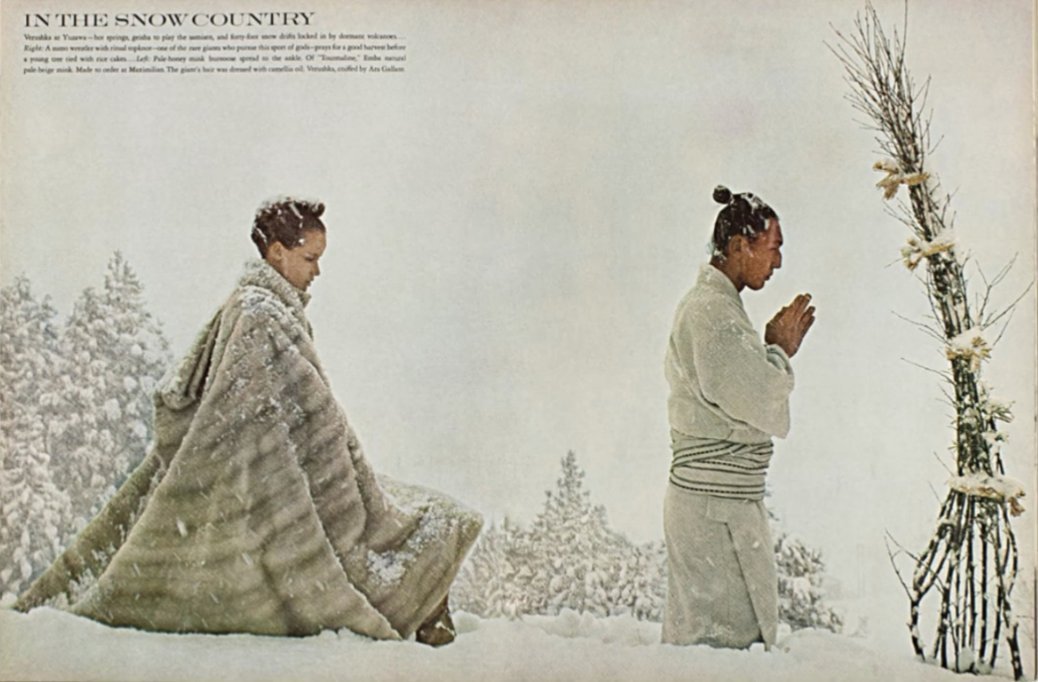Diana Vreeland: The Eye Has to Travel
Have you ever watched fashion documentaries? The directors, through the best aesthetics, allow insiders in the fashion industry to tell their stories and share their insights.
Diana Vreeland: The Eye has to Travel, released in 2011, has always been in the top 10 must-watch fashion documentaries—and I finally watched it this week. The documentary includes interviews of Vreeland with George Plimpton for her memoirs, the models and photographer who worked with her, her celebrity friends, and her family members. Through these different angles, a Diana who is saucier than Devil Wears Prada and lived her life to the fullest is presented.
Interestingly, one of the directors, Lisa Immordino Vreeland, is Diana’s granddaughter-in-law. Though Lisa had never met Diana, she had all the access and connections needed to make this a successful documentary, making it a tribute in turn.
“ The best thing about London is Paris.”
Born in 1903, Diana Dalziel was the eldest daughter of American socialite Emily Key Hoffman and Scottish stockbroker Frederick Young Dalziel. Her early childhood home in Paris was frequently visited by leading artists at the time. As they immigrated to the United States, Dalziel started attending Brealey School to study ballet. When she was 18, she married the love of her life—Thomas Reed Vreeland—and gave birth to Tim and Frederick. She started working at the age of 33 as Harper’s Bazaar’s editor, then became the editor-in-chief of Vogue 26 years later. At the age of 70, she became the special consultant to the Costume Institute of the Metropolitan Museum of Art.
Her intuition towards fashion and her eyes for talent are impeccable. The Great Fur Caravan is one of the most breath-taking series I have seen in fashion magazines, and this 1966 series has proven its timeliness. The twenty-person crew from Vogue made an unprecedented journey to Japan with Richard Avedon, capturing a love story featuring supermodel Veruschka.
Two of the 26 page series
Featured image via
The narrative is about a girl who travels to a foreign country and falls in love with a Japanese giant (the male model is a 7ft sumo wrestler). The photos are truly breathtaking, a merging of art and fashion under an exotic and dreamy setting.
Rumour has said that this shooting cost one million dollars, which would be equal to modern day seven million dollars. It is definitely one of the most audacious projects that Vreeland has spearheaded, but I think the final result has proved its value.
Featured image via
Diana wasn’t pretty by society’s standards, and her mom would even call her ugly, but she has never tried to hide her imperfections. She created her own personal statement and style, which ensues in her work as well.
For Harper’s Magazine, she opened up a column called Why Don’t You? In this column, she wrote down eccentric style ideas that were best enjoyed as concepts as they were difficult to actually execute. Nonetheless, the ideas were playful and precious and could always put a smile on readers’ faces. She is not telling readers to do something a certain way, but shows them that there is another way of doing something. For 26 years, the column shouted freedom and invited the reader into her creative world.
WHY DON’T YOU…?
“ Paint a map of the world on all four walls of your boys’ nursery so they won’t grow up with a provincial point of view?
Cover a big cork bulletin board in bright pink felt banded with bamboo, and pin with colored thumb-tacks all your various enthusiasms as your life varies from week to week?”
Vreeland was not perfect. As a boss, she was strict; as an editor, she often went beyond the budget; as an individual, she over-romanticized things. However, she was special and not afraid to be quirky, and that’s good enough.
The 85 minutes documentary allows the audience to have a glimpse into a fashion pioneer’s life, and is just perfect for a chill night.









